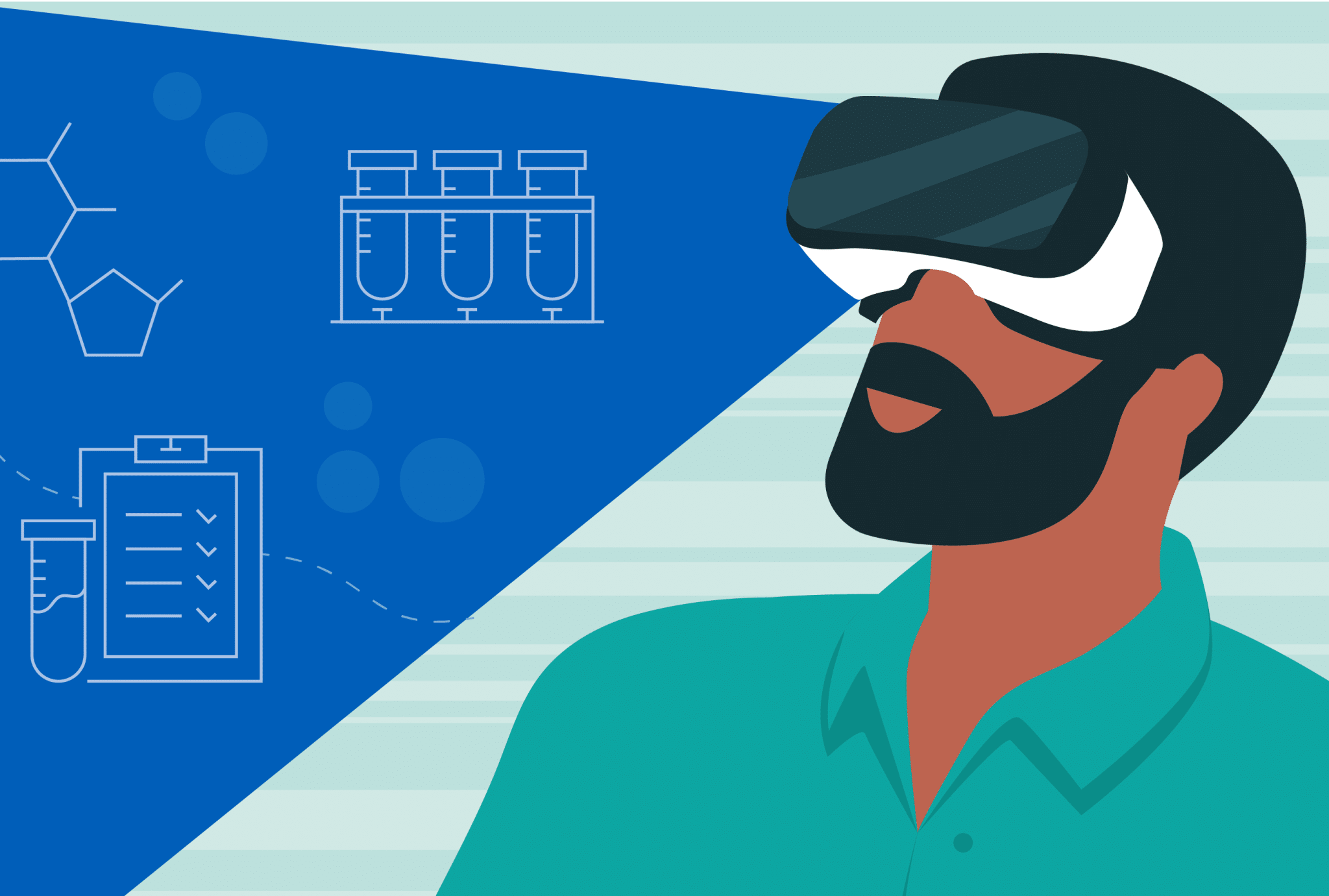Although there are many advantages of VR there are some disadvantages that we would like to address.
- Requiring access to a headset limits the amount of learners that can view the material.
Although headsets are limited, they allow for more learners to be trained than would be possible in a traditional laboratory setting.
- It isn’t possible to take notes while wearing the headset.
Those watching a traditional video or observing a procedure in a laboratory would need to look away to take notes. A VR film is designed to focus the learner on the content without distraction. We suggest that if someone does want to take notes that they watch the video as intended, with breaks as suggested either in a taught session or by the video in a self-led session. Once the video has been watched/experienced as intended, they can then watch the video again, taking notes and pausing as needed.
- Using a VR headset as a method of delivering education might not be accessible for everyone.
The videos have been shot and designed to be watched in a VR headset, which dramatically enhances the learning experience. For this reason, we are not making traditional versions of the films available widely. We acknowledge, however, that there will be some people who cannot watch the film in a headset, for example those who require subtitles or who are concerned that VR may trigger a medical episode. If you have a learner who is not able to view the videos in a headset or who requires subtitles, please get in touch and we will be able to arrange an traditional alternative for them.
- Virtual reality can give some people motion sickness.
Please note that because of how the videos were filmed, it is highly unlikely that someone will suffer from motion sickness while watching them. We strongly encourage anyone who is concerned that this will happen to them to give a video a try, even if they have previously felt sick while using a VR headset in the past.



